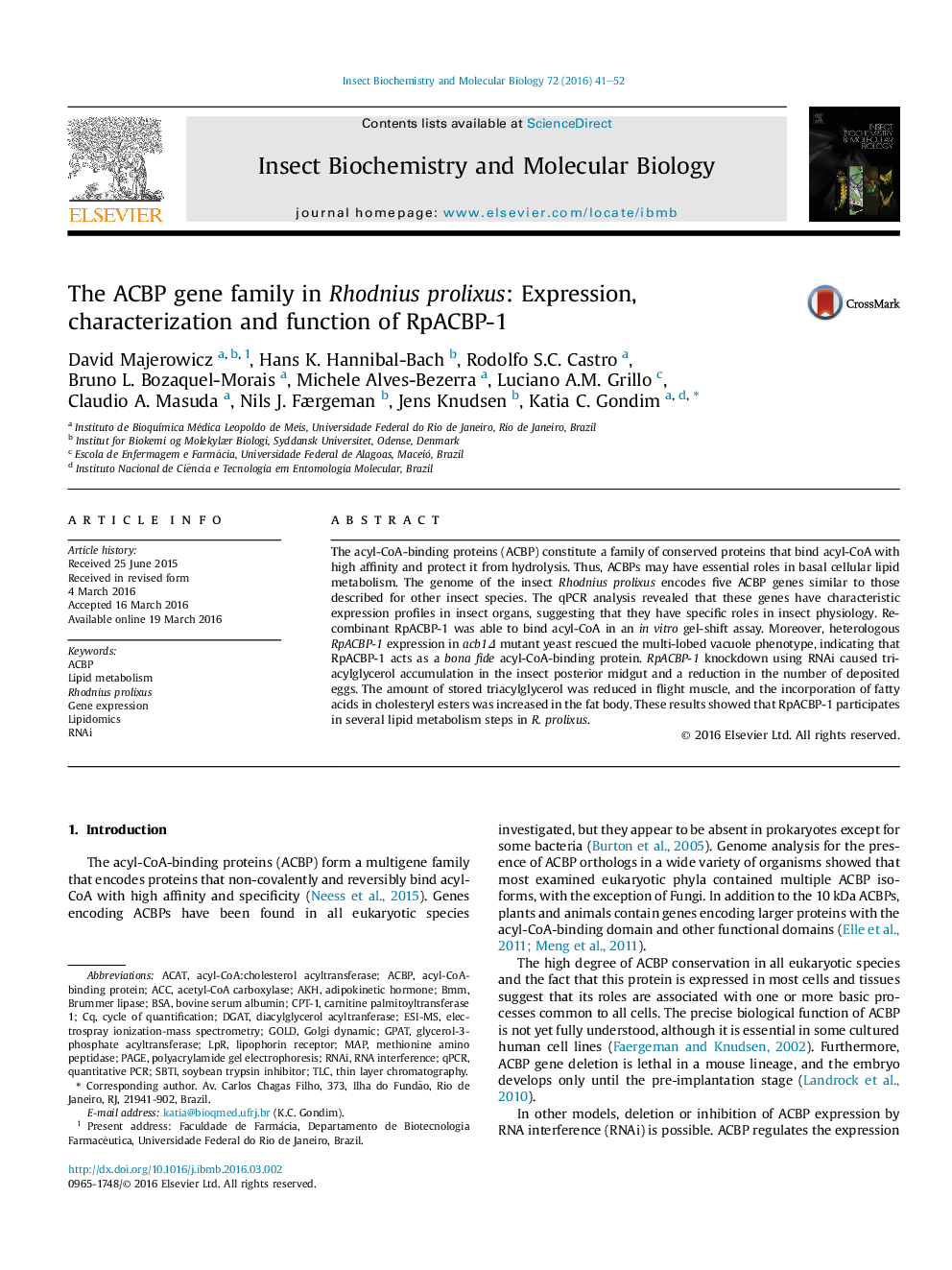| Article ID | Journal | Published Year | Pages | File Type |
|---|---|---|---|---|
| 1981966 | Insect Biochemistry and Molecular Biology | 2016 | 12 Pages |
•Rhodnius prolixus genome encodes five different acyl-CoA-binding protein genes.•Genes from ACBP gene family showed individual expression profiles on insect organs.•RpACBP-1 was able to bind acyl-CoA both in vitro and in vivo.•RpACBP-1 knockdown modulated triacylglycerol stores on posterior midgut and flight muscle.•RpACBP-1 expression inhibition also reduced female fecundity.
The acyl-CoA-binding proteins (ACBP) constitute a family of conserved proteins that bind acyl-CoA with high affinity and protect it from hydrolysis. Thus, ACBPs may have essential roles in basal cellular lipid metabolism. The genome of the insect Rhodnius prolixus encodes five ACBP genes similar to those described for other insect species. The qPCR analysis revealed that these genes have characteristic expression profiles in insect organs, suggesting that they have specific roles in insect physiology. Recombinant RpACBP-1 was able to bind acyl-CoA in an in vitro gel-shift assay. Moreover, heterologous RpACBP-1 expression in acb1Δ mutant yeast rescued the multi-lobed vacuole phenotype, indicating that RpACBP-1 acts as a bona fide acyl-CoA-binding protein. RpACBP-1 knockdown using RNAi caused triacylglycerol accumulation in the insect posterior midgut and a reduction in the number of deposited eggs. The amount of stored triacylglycerol was reduced in flight muscle, and the incorporation of fatty acids in cholesteryl esters was increased in the fat body. These results showed that RpACBP-1 participates in several lipid metabolism steps in R. prolixus.
Graphical abstractFigure optionsDownload full-size imageDownload high-quality image (117 K)Download as PowerPoint slide
